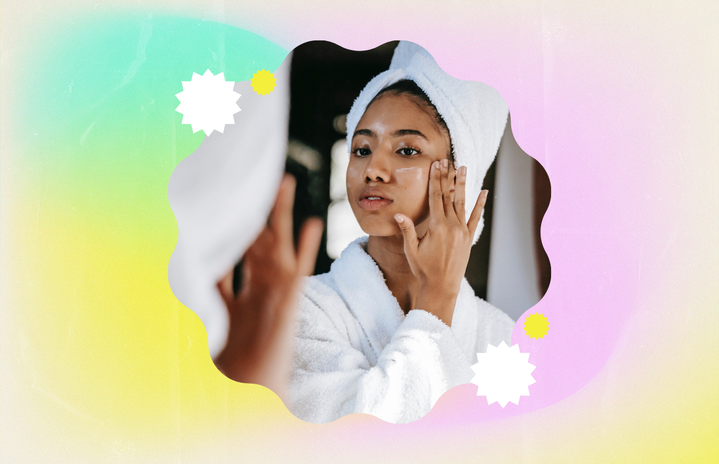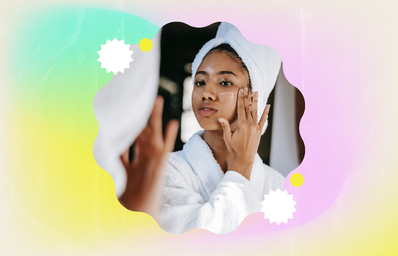If you’re on #BeautyTok like I am, skin cycling has likely been all over your FYP for the past week. The skin cycling trend first went viral when user @_eaden posted a video to TikTok praising the skincare regimen, saying, “Babe, let me give you the tea right now, because when I tell you I have not gotten more compliments on my skin then when I started doing this a couple months ago — and it’s this: skin cycling.”
When I first heard about skin cycling, I was intrigued, but a bit weary of its actual effectiveness. After all, haven’t there been so many skincare trends that come and go on TikTok? But then I began scrolling through the comments of @_eaden’s video and saw that other users were also raving about skin cycling — and that’s when I was just about sold.
Her Campus spoke with Dr. Whitney Bowe, the dermatologist who created skin cycling and has amassed over 700,000 followers on TikTok, to learn more about what skin cycling is, why it’s effective, and how to try it yourself.
What is skin cycling, and how does it work?
Dr. Bowe shares that she first thought of skin cycling after seeing her clients’ flawed approaches to skincare.
“People were taking a kitchen sink approach to their skincare, mixing and matching ingredients that simply don’t play well together in the sandbox!” Dr. Bowe tells Her Campus. “People were experiencing irritation, red blotches, or thinking their skin was just ‘purging’ for months at a time, but it was all because they were using too many products, at too high concentrations, many of which just don’t work well together on the skin.”
That’s when Dr. Bowe came up with skin cycling, a skincare method that follows a four-night cycle and focuses on purposefully layering skincare products. “Skin cycling takes a ‘less is more’ approach, being thoughtful and deliberate about your skincare routine,” Dr. Bowe says. “Rather than adding more products on top of one another, skin cycling encourages you to use products in a strategic way to complement one another.”
The four-night cycle works like this: On the first night, you exfoliate, on the second night, you apply retinoids, and on the third and fourth nights, you give your skin a chance to recover. Essentially, the cycle goes like this: Exfoliation Night, Retinoid Night, Recover, Recover — and rinse and repeat.
“The concept is very intuitive,” Dr. Bowe shares. “Your muscles need recovery days, your mind needs recovery days, so it makes sense that your skin also benefits from recovery days.”
What skin type is skin cycling best for?
“The classic skin cycling routine — the four-night cycle — works incredibly well for individuals with sensitive skin, like me!” Dr. Bowe says. “I want to see results from my skincare, but I really want to dial down the irritation and inflammation that happens when you overuse the powerhouse type products like exfoliating acids or retinol.”
Dr. Bowe continues, “If you’re a newbie to some or most of the products we use in skin cycling, introduce them one at a time. This will allow you to adjust to the new products without irritating your skin.”
If you have rosacea, Dr. Bowe shares that you may benefit from a five-night cycle instead of a four-night cycle. Alternatively, if you have oily or acne-prone skin, Dr. Bowe suggests trying out a three-night cycle.
The important thing to remember about skin cycling is that you likely won’t see the benefits of it overnight. Dr. Bowe explains that if you keep up with skin cycling, you’ll probably see a difference in your skin in “a few months.”
How can you try skin cycling yourself?
On the first night, which is Exfoliation Night, opt for a chemical exfoliating product. First, wash your face as you normally would, then use the chemical exfoliant, and lastly, lather on some facial moisturizer. A cult-favorite chemical exfoliant is Paula’s Choice 2% BHA Liquid Exfoliant, but use whatever works best for your skin!
On the second night — Retinoid Night — add a retinoid treatment to your face. Apply your products in this order: cleanser, retinoid, and moisturizer. While retinoids can be expensive, some affordable options are The Inkey List Retinol Serum and the CeraVe Resurfacing Retinol Serum.
On the third and fourth nights, give your skin time to recover. Hold off on all exfoliating products, acids, and retinoids and give your skin the chance to breathe. On these nights, focus on really restoring your skincare barrier and applying products that hydrate your skin, like a hydrating serum with hyaluronic acid and a nourishing moisturizer. Stay on top of the regimen for a few months and get ready to say hello to healthy and glowing skin in no time!


